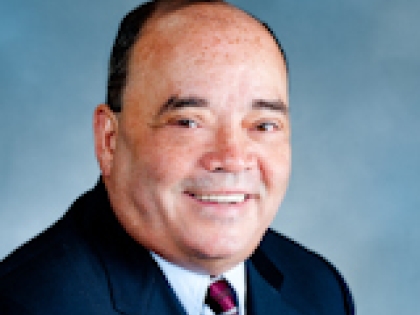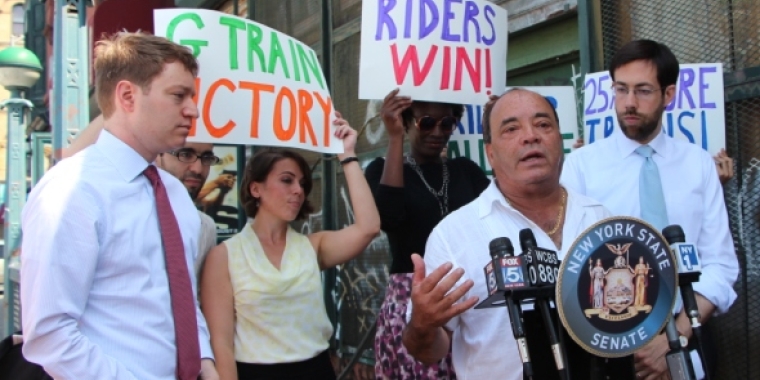
2011 Redistricting Frequently Asked Questions
Martin Malavé Dilan
January 3, 2011
Some common questions about the Redistricting process?
1. What role do U.S. Census figures play in redistricting?
2. What is redistricting?
3. What is reapportionment?
4. What requirements must the legislature follow?
5. What is the Legislative Task Force on Demographic Research and reapportionment (LATFOR)?
6. How the bill becomes law.
7. What about an independent redistricting commission?
8. When will it take effect?
9. Why should I care?
10. How can I get involved?
11. How can I get redistricting data?
1. What role do U.S. Census figures play in redistricting?
The decennial count of the state’s population determines how the state’s Assembly and Senate districts need to change, in terms of make up or size, to best reflect the current population and trends. The Census data also determines how many seats in the House of Representatives are allotted to the state (reapportionment).
2. What is redistricting?
The U.S. Constitution requires that congressional and state legislative district boundaries be redrawn every ten years, reflecting population shifts detected by the Federal census. This process, referred to as "redistricting", is undertaken by the state Legislature. In New York State, the Legislative Task Force on Demographic Research and Reapportionment analyzes the Census Bureau population figures used in the redistricting plan.
3. What is reapportionment?
Reapportionment is the redividing of a given number of seats in a legislative body among smaller geographical units. For example, the 435 seats in the House of Representatives must be allocated to reflect a state's proportion of the national population.
4. What requirements must the legislature follow?
The State Constitution requires 150 Assembly districts and contains a formula for the determination of the number of Senate districts.
5. What is the Legislative Task Force on Demographic Research and reapportionment (LATFOR)?
The Task Force on Demographic Research and Reapportionment was established by Chapter 45 of the New York State Laws of 1978 to research and study the techniques and methodologies to be used by the U.S. Commerce Departments' bureau of the Census in carrying out the decennial federal census.
The Task Force aids the Legislature by providing technical plans for meeting the requirements of legislative timetables for the reapportionment of Senate, Assembly and Congressional districts. It also conducts research projects relating to the collection and use of census data and other statistical information.
The Task Force consists of six members, including four legislators and two non-legislators. The Temporary President of the Senate appoints one legislator, Michael F. Nozzolio (Co-Chair), and one non-legislator, Welquis R. Lopez. The Speaker of the Assembly also appoints one legislator, Assemblyman John J. McEneny (Co-Chair), and one non-legislator, Roman Hedges. The Minority Leaders of the Assembly and the Senate each appoint one legislator: Assemblyman Robert Oaks and Senator Martin Malavé Dilan.
6. How the bill becomes law.
The redistricting plan must be approved by the state Legislature and the Governor. In addition, 3 counties of New York City (Bronx, Kings, and New York) require that the U.S. Justice Department's Civil Rights Division or the U.S. District Court for the District of Columbia review and approve the plan for compliance with the Voting Rights Act.
7. What about an independent redistricting commission?
Across the United States independent commissions made up of citizens, rather than elected representatives, have either already been put in place or are being discussed for future redistricting efforts.
There are a number of proposals in the senate to form variations of independent commissions, such as these:
- S.3419 (Governor Program Bill 2011)
- S.8521 (Dilan 2009)
- S.3253 (Dilan 2010-11)
- S.3254 (Dilan 2010-11)
- S.2543 (Gianaris)
8. When will it take effect?
The new boundaries for congressional and state Assembly and Senate districts will be in effect for the 2012 elections.
9. Why should I care?
Redistricting and reapportionment determines how every citizen and community will be represented at the state and federal levels of government for the next ten years. It will determine whether New York's diverse communities will have sufficient political strength to elect candidates of their choice. At a time when so many public policy decisions affect the quality of our daily lives, your right to fair and effective representation is crucial.
10. How can I get involved?
The Task Force has, and will again, hold a series of public hearings across the state to get input from the general public. If you did not have the opportunity to attend one of their hearings, you can view transcripts and testimony. For upcoming meetings, or general questions please contact the Task Force.
NYS Legislative Task Force on Demographic Research and Reapportionment
250 Broadway — Suite 2100
New York, NY 10007
212-618-1100
11. How can I get redistricting data?
The Task Force has a public access policy to encourage full and meaningful public participation in the redistricting process. Visit this site, or the joint LATFOR website at latfor.state.ny.us.
Share this Article or Press Release
Newsroom
Go to NewsroomGreenpoint Community Environmental Fund Meeting
September 23, 2013



